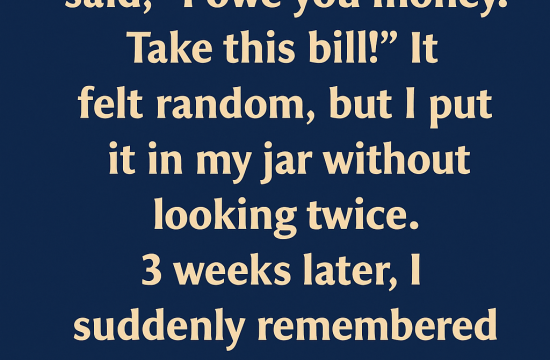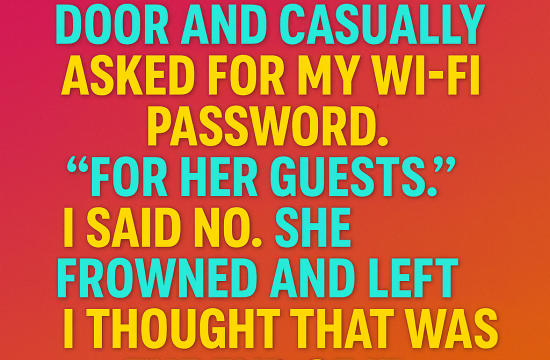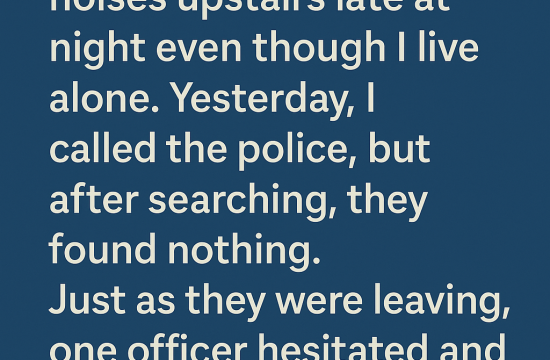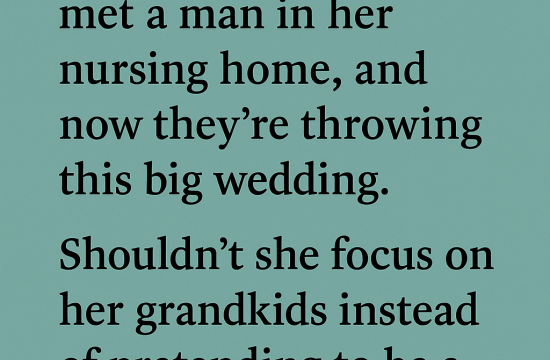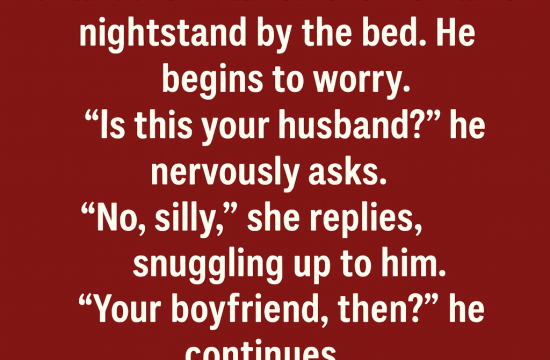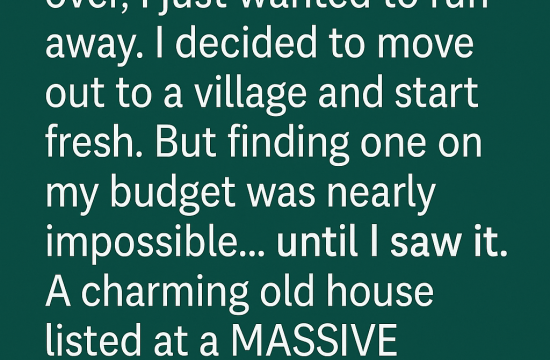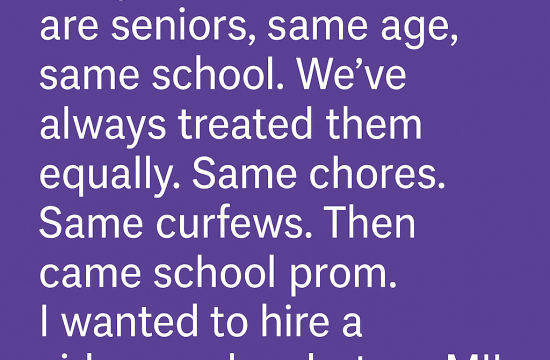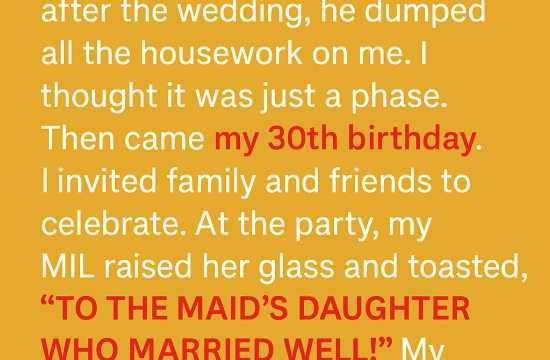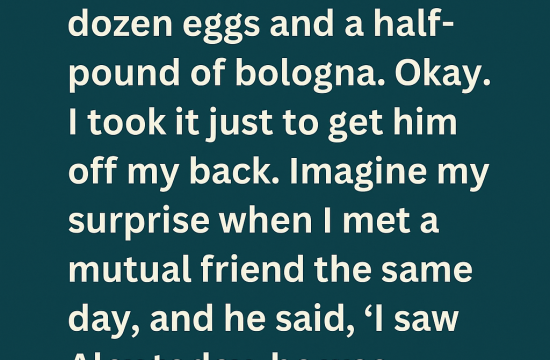A 4-year-old in my class was proudly showing off her drawing. Stick figures for Mommy, Daddy, little Sis, herself—and… one more.
They’re a family of four, so I asked about the fifth person. The artist replied casually, “That’s my other mommy.”
At first, I chuckled. I assumed she meant a make-believe friend or maybe a favorite babysitter. Kids say all kinds of whimsical things.
But there was something about the way she said it—calm, assured, like it was the most natural thing in the world. Her little brow furrowed when I didn’t understand. She tapped the paper again and added, “She lives with Grandma sometimes. But she visits me when Daddy’s not home.”
I didn’t pry. Our Montessori preschool in a quiet suburb outside Asheville encourages redirection when kids veer into sensitive territory.
But curiosity lingered.
Later that day, while wiping down tables, I brought it up with Ms. Marisol, our assistant teacher.
“Did you see Liora’s drawing?” I asked. “Five people.”
Marisol laughed. “Maybe she counted a pet?”
“No,” I said quietly. “She called the extra one her ‘other mommy.’ Said she visits when Daddy’s not around.”
Marisol froze mid-wipe. I saw something flicker behind her eyes.
“You remember her parents, right?” she asked. “Tall dad in suits. Quiet mom in yoga pants?”
I nodded. Jamil was the type who filled a hallway—booming voice, expensive watch, always rushing. Zahra was the opposite. Soft-spoken, polite, always smiling—nervously.
Marisol continued, “A couple months ago, I overheard Zahra telling another mom that she was being ‘watched too closely at home.’ She said she missed having her own space. It didn’t sound like small talk.”
That stuck with me.
About a week later, Liora handed me a new drawing: a house with two rooftops connected by a rainbow.
“This one’s my mommy’s other house,” she said. “She likes it better than Daddy’s house.”
I blinked.
“Where is this house, sweetie?” I asked.
“With Grandma,” she replied. “And with Auntie Nasrin. She lets Mommy wear her dresses.”
Her words hung in the air like whispered secrets.
That evening, curiosity got the better of me. I looked up Zahra on social media—her last name was hyphenated, easy to remember: Zahra Alavi-Kent.
Her profile was public.
One photo caught my attention. Zahra, sitting in a sunroom, her face glowing with a light I hadn’t seen in person. The caption:
“Finding light again, slowly but surely. #healing #safeplace”
The location tag? Burnsville—about an hour away in the mountains. Tagged in the post? Nasrin Alavi.
Her sister. Or, maybe more.
I scrolled back. There were family pictures—birthdays, beach trips—until August. Then a void. The next post appeared in January: Zahra at a park with Liora, captioned:
“No matter what, I’ll keep showing up for her.”
A story began to form—quiet but clear.
The following Monday, when Jamil came for pick-up, Liora hesitated. Most kids run to their parents. She just stood there. He had to call her twice—louder the second time.
When he reached for her hand, she flinched. Not dramatically—just a subtle recoil. Like muscle memory.
My chest tightened.
A few days later, Zahra came instead.
I lingered, commenting on Liora’s love of art.
“She’s always drawing,” Zahra said softly. “It’s how she processes.”
I hesitated, then said, “She told me about her… ‘other mommy.’ She said you visit when Jamil’s not home.”
Zahra’s face froze.
I worried I’d overstepped.
But then, she let out a small breath—almost a laugh.
“She told you that?”
I nodded.
“She’s been trying to tell people,” Zahra said. “I didn’t think anyone would listen.”
We sat on the low brick wall near the gate.
“She’s right,” Zahra whispered. “I’m staying with my mom. And Nasrin.”
“Is Nasrin…?”
“She’s my person,” she said. “We were best friends in college. Reconnected when things fell apart.”
I didn’t speak.
“Jamil’s not a bad father,” she continued. “But he’s… controlling. I stopped wearing what I liked. Stopped seeing my sister. Had to justify every move. I thought I was protecting Liora by staying—until she started mimicking his tone.”
Goosebumps rose along my arms.
“So I left. Not permanently. Just to breathe.”
In the weeks that followed, Zahra appeared more often. Helped with art projects. Brought homemade snacks.
Then Jamil stopped showing up.
Word spread—something about an incident at work. HR. Suspension.
A short while later, Zahra arrived with an envelope. “Custody meeting,” she said, exhausted. “Wish me luck.”
I hugged her. I never hug parents. But this felt right.
The next week, Liora brought in a new drawing. Just three figures: herself, Zahra, and Nasrin. Holding hands beneath a bright sun.
“No Daddy?” I asked gently.
She shook her head. “He’s going on a trip.”
Zahra later explained—he’d taken a job in Atlanta. They were trying a long-distance arrangement while lawyers worked things out.
Summer came. Liora bloomed. She laughed more. Danced freely.
“She’s lighter now,” Marisol said one morning. “Like her little shoulders aren’t holding up the whole house anymore.”
Then came the surprise.
Zahra invited the staff to a thank-you picnic at her mom’s house.
When I arrived in Burnsville, I gasped.
It was the rainbow house. Two rooftops. A greenhouse. Wind chimes.
Inside, the sunroom looked just like the photo.
On the mantle sat a picture of Zahra and Nasrin—barefoot on a dock, heads leaned together, laughing like they knew something sacred.
The frame read:
“Chosen Family is Still Family.”
Zahra caught me looking.
“She made me frame that one,” she smiled, nodding to Liora who was spinning in the grass with a paper crown.
“Do people ask questions?” I asked.
“Always,” she said. “But I’m done whispering. Liora’s already teaching me how to be brave.”
That night, beneath the stars, sipping mint tea, I felt like I’d witnessed something sacred. Not dramatic—just real.
Here’s what I learned:
Sometimes the truth comes in crayon.
In the bold, honest colors of children who haven’t yet learned how to lie.
So if a kid draws something that doesn’t “fit,” don’t dismiss it. Ask. Listen.
You never know who’s whispering through their tiny hands.
And as for Zahra—she didn’t need rescuing.
Just someone to believe her.


